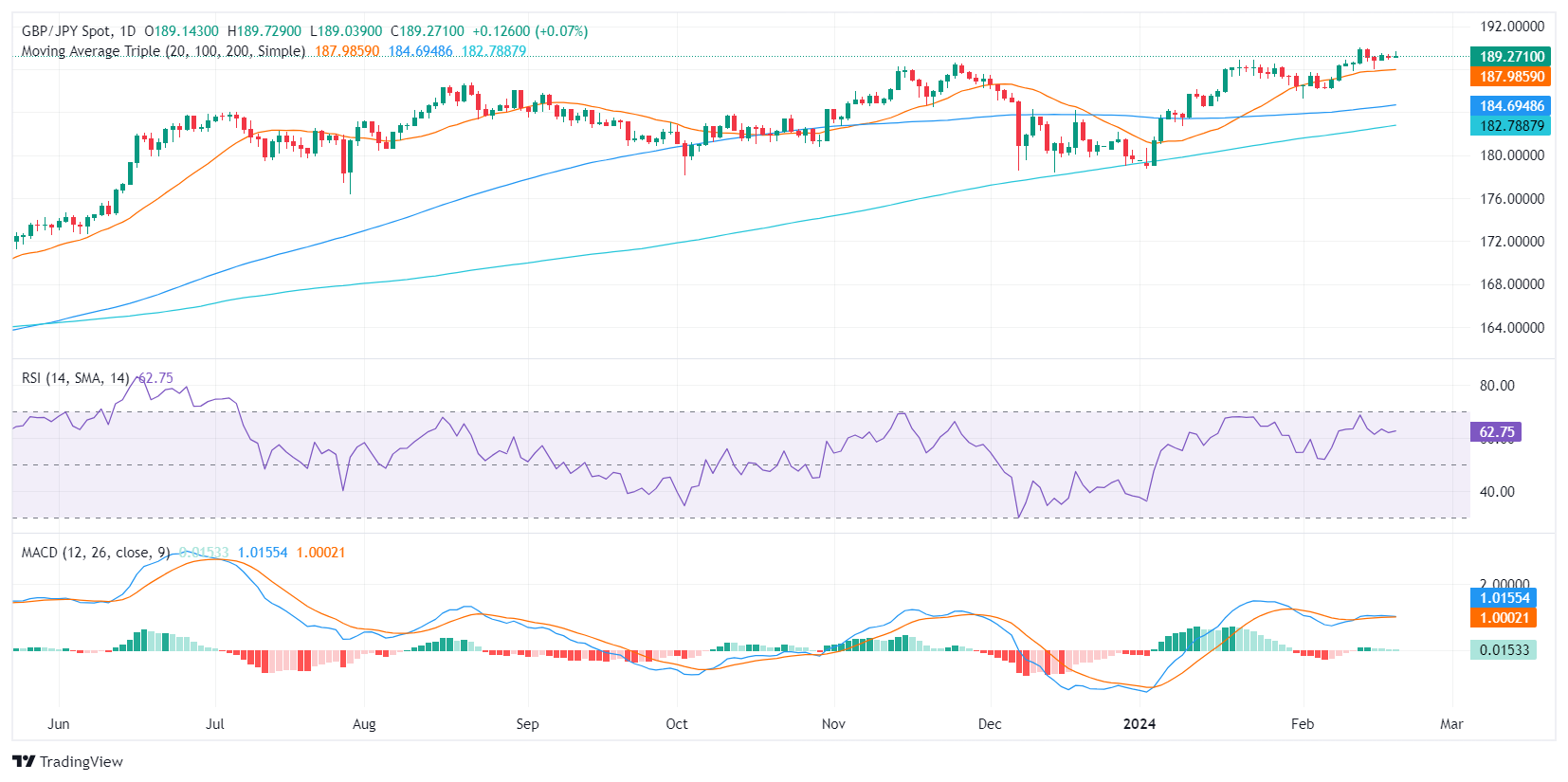GBP/JPY flattens after BoE Bailey’s words, outlook still bullish
- The GBP/JPY stands at 189.24 reflecting a moderate gain of 0.11% in Tuesday's trading session.
- The Bank of England maintains its neutral stance, with Governor Bailey hinting at potential rate cuts even before inflation reaches the bank’s target.
- Japanese and British preliminary PMIs from February are due on Thursday.
In Tuesday's session, the GBP/JPY pair recorded modest gains, trading at 189.24. Influences on the pair's movement encompass the ongoing shifts in both UK and Japanese financial and economic landscapes which are shaping the Bank of England (BoE) and the Bank of Japan (BoJ) monetary policy decisions. The British bank remains cautious warning about the resilient local economy while the BoJ doesn’t give clear signals on when it will leave its ultra-loose policy.
On the British front, Bank of England (BoE) officials, including Governor Andrew Bailey, gave no fresh policy guidance during their testimony before the UK Treasury Select Committee. Bailey perceived an upturn in the economy and advised that the central bank could consider rate cuts even before inflation hits their target levels. However, as for now, markets are pricing in that the first rate cut will be in the August meeting but incoming data will continue shaping the timing of the easing cycle.
GBP/JPY daily chart
The daily Relative Strength Index (RSI) for GBPJPY is currently situated in positive territory, marking a slight uptrend, with a mild surge further cementing bullish control. Meanwhile, the Moving Average Convergence Divergence (MACD) histogram, complementing the bullish cues from the RSI, has continued to print green bars, reflecting consistently positive momentum in recent days, although the flattening slopes point towards potential slowing of the current bullish momentum.
Finally, it's worth noting that GBPJPY remains above its 20, 100, and 200-day Simple Moving Averages (SMAs), hinting at the bullish command in the overall trend, despite indicators showing some signs of flattening. This technical position largely backs the continued dominance of buyers, with any near-term pullbacks likely serving as technical corrections for further climbs in the medium-to-long term.
GBP/JPY daily chart
